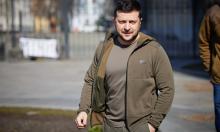A Broken Network
Technique designed for astronomic observation has experienced a serious revolution. Thanks to it, and as a result of usage of charge transfer device matrixes as radiation detectors, even small amateur telescopes can register dangerous meteorites approaching the Earth before they hit the planet’s surface. Unfortunately, this revolution had no effect for the Russian optical tracking complex; Russian specialists observing the near space and the Solar system are currently practically blind in this respect.
Large meteorites drop on the Earth rather often. As is known, within ten years US’s nuclear detection system and spy satellites registered about 250 strong explosions caused by pieces of asteroids, comets and large meteorites that dropped on the Earth. When such objects from space drop in densely populated areas, they can entail lots of troubles there. For instance, if the famous Tunguska meteorite had lingered for some time more, it would have dropped in Russia’s European part, but not in Siberian taiga. It is not ruled out that the meteorite would have ruined the Russian capital completely. The latest object from space dropped on the Russian territory on September 25, 2002. When it dropped, a strong explosion sounded in Siberian taiga, near the city of Bodaibo in Russia’s Irkutsk region, at 3:00 a.m. A special expedition is to be organized next spring for investigation of the explosion’s consequences and for study of the object itself.
Unfortunately, domestic tracking devices failed to register the meteorite when it approached the planet or when it moved in the atmosphere. But an American satellite designed for missile launching registered the meteorite. As the space object wasn’t registered in Russia, neither the RF EMERCOM, nor the Ministry of Defense or astronomers from Irkutsk warned local population about the meteorite approaching the Earth. The problem is that Russian network of optical space surveying is out of date. After the breakup of the USSR, many stations for optical surveying of near-Earth objects remained on the territories of newly established independent states: in Ukraine, in Central Asia and in the Caucasus region. The system for near-Earth space control, that was created on the basis of observatories at universities and teacher training institutes in 1957, is completely outdated. In fact, Russian astronomers and military men controlling movement of space objects cannot run effective control over the space above Russia’s territory. The fact that Russian astronomers failed to register the large meteorite that dropped last September proves ineffectiveness of Russian astronomic services.
One of the reasons why a revolution took place in astronomy five years ago was that photoplates were replaced with charge transfer device matrixes as radiation detectors. Such matrixes are installed in all modern video cameras, digital photo cameras or control systems in large supermarkets. A telescope with the charge transfer device matrix allows to register and measure everything that the device detects. Surveying with the help of the charge transfer device successfully replaced time-taking photographic methods of astronomic observations. Unfortunately, attitude of the Russian government to domestic science produced an unfavorable effect: Russian astronomy is lagging far behind the world astronomy, as majority of telescopes in Russia are not equipped with charge transfer devices. And this is at the time when not only professional, but also amateur astronomers in other countries have such telescopes. As experience of cooperation between such amateurs and Russia’s Pulkovo observatory shows, a well organized surveying system consisting of small and average telescopes with charge transfer devices is very effective for tracking of moving space objects. This experience can be used for bringing Russian surveying services to the level of effective operation. For this purpose, a program for supply of new equipment to institutions of higher education has been recently launched. In connection with this program, it would be reasonable to produce domestic charge transfer device matrixes for those telescopes that are used in universities of Russia. Production of such matrixes can be financed partially at the expense of Russia’s Ministry of Defense. This measure would kill two birds with one stone. On the one hand, astronomers in Russian universities would get an opportunity to organize lectures on a modern level and to attract youth more actively to scientific studies, searches of newest stars, movement of comets, asteroids and meteorites, for instance. On the other hand, this would allow the national defense surveying services to use wonderfully equipped telescopes for control of the space. For this very reason tracking stations are spread all over the territory of Russia.
Astronomers of the Pulkovo observatory could actively participate in solution of this problem, as the observatory developed methods for prompt definition of celestial orbits as a result of surveys involving charge transfer devices; the observatory also developed mathematical support for processing and control of the surveys. All these measures would make Russian astronomic services more effective and allow to register meteorites before they drop on the Earth.
Izvestia.ru
Translated by Maria Gousseva
Related links:
Subscribe to Pravda.Ru Telegram channel, Facebook, RSS!




